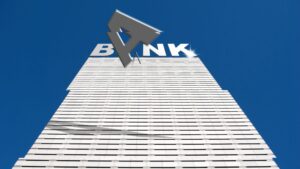Random Reflections
 Silicon Valley Bank which was one of the biggest banks in the US collapsed, followed by Signature Bank. Now Moody’s Investor Service has placed First Republic Bank, Western Alliance Bank Corp, Intrust Financial Corp, UMB Financial Corp, Zion Bank Corp and Comerica Inc. for a review to downgrade them because of their reliance on uninsured deposit funding.
Silicon Valley Bank which was one of the biggest banks in the US collapsed, followed by Signature Bank. Now Moody’s Investor Service has placed First Republic Bank, Western Alliance Bank Corp, Intrust Financial Corp, UMB Financial Corp, Zion Bank Corp and Comerica Inc. for a review to downgrade them because of their reliance on uninsured deposit funding.
In the meantime the US government has rescued SVB depositors through a new lending facility to support lenders financing, hoping that this will stop further bank failures.
Between 2008 and 2012, more than 465 private banks failed in the US. Some were selectively saved by US government through the Federal Reserve equivalent to RBI in India.
To prevent the government rescuing banks the Financial Stability Board was created. It claims that its role is as follows:
The FSB has a unique composition among international bodies, because it brings together senior policy makers from ministries of finance, central banks, and supervisory and regulatory authorities, for the G20 countries, plus four other key financial centres – Hong Kong, Singapore, Spain and Switzerland. In addition, it includes international bodies, including standard-setters and regional bodies like the European Central Bank and European Commission. This means all the main players who set financial stability policies across different sectors of the financial system are at one table. So when policies are agreed, they also have the authority to carry them out.
FSB had clearly decided that the government will not pump money to save banks and the depositors should bear the risk. But its failure can be seen from the way in which the US government jumped in to save the investors of the Silicon Valley Bank who are mainly venture capitalists.
What is Venture Capital?
Venture capital (VC) is a form of private equity and a type of financing that investors provide to start-up companies and small businesses that they believe have long-term growth potential. Venture capital generally comes from well-off investors, investment banks, and any other financial institutions. Venture capital doesn’t always have to be money. In fact, it often comes as technical or managerial expertise. VC is typically allocated to small companies with exceptional growth potential or to those that grow quickly and appear poised to continue to expand (as per Investopedia).
These Venture Capitals fund start-ups when they estimate a huge profit in a short time. They exit when they have reaped good profit. This is just gambling. In the case of SVB the VCs invested in SVB which was focussing on start-ups. Now they have burned their fingers.
In Israel and China the start-ups are funded directly by the government or through Development Banks. Their survival rate is only 15%. In India they depend on banks and Venture Capital. Contrary to some statements and newspaper articles, there is going to be a fall in funding to start ups in India. They are already struggling and will suffer more for want of funding.
The most important lesson here is that the government’s efforts on privatisation of the public sector banks which is put on hold due to stiff resistance from unions and people of the country, should end forever. Some so called experts are still demanding privatisation. Thankfully, we could stop the Financial Resolution and Deposit Insurance Bill 2017, recommended by the Financial Stability Board; otherwise we would have seen many bank collapses and depositors’ losses.
At least now the votaries of privatisation should rethink. Only public sector banks can save the country and the depositors. Of course they require better governance and they have to get out of the clutches of the ruling party. The fresh consortium lending of Rs.25000 cr to Adani Group is a misadventure due to pressure.
There are arguments in US that the dilution of Dodd-Frank Act in 2018 has led to the present US bank crisis.
What is Dodd Frank Act?
- The Dodd-Frank Act targeted financial system sectors that were believed to have caused the 2007–2008 financial crisis.
- Leading up to 2007, lax regulations led to extremely risky lending practices, which caused a housing sector bubble that ultimately burst and drove the global crisis, the need for public bailouts of financial institutions, and the recession.
- Those institutions, seen as responsible, included banks, insurance companies, investment banking firms, mortgage lenders, and credit rating agencies.
- Critics of the law argue that the regulatory burdens it imposes could make U.S. firms less competitive than their foreign counterparts.
- In 2018, Congress passed a new law that rolled back some of Dodd-Frank’s restrictions.
- This has led to the new collapses now.
If we dilute the monetary mechanism and encourage privatisation we will also end up in a bigger financial crisis. Let us learn the lesson from the collapses taking place. It can happen here anytime.
Thomas Franco is the former General Secretary of All India Bank Officers’ Confederation and a Steering Committee Member at the Global Labour University.
Centre for Financial Accountability is now on Telegram. Click here to join our Telegram channel and stay tuned to the latest updates and insights on the economy and finance.

